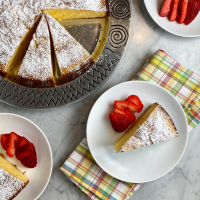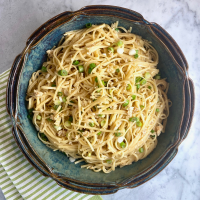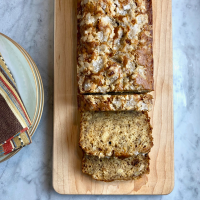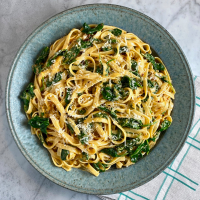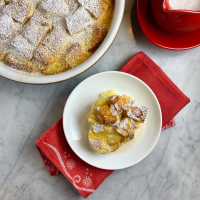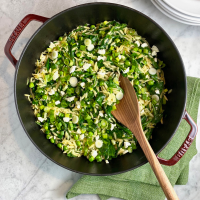
This savory pie gobbled up all of the kale from my CSA box. Kale is more appetizing to my crowd when it’s paired with lots of salty cheese. 🙂 We ate it as a main course with sliced heirloom tomatoes and green salad on the side. It would be wonderful served for brunch or a special lunch too.
This recipe was adapted from The Washington Post, contributed by G. Daniela Galarza. I modified the method and incorporated my CSA purple kale and Toscano kale along with baby spinach. Swiss chard and/or collard greens could also be used in the filling.
The original recipe notes that sheep’s milk feta is traditional in spanakopita but any salty, crumbly or grated cheese such as cojita, chevre, extra-sharp white cheddar, paneer or pecorino would also work. The pie can also be made without the crust as a gluten-free option. Healthy and delicious.
Yield: Serves 4 to 6
- 2 tablespoons olive oil, plus more for brushing
- 1 bunch (about 4 ounces) scallions, white and green parts, thinly sliced
- 8 to 10 cups (about 10 ounces) baby spinach (whole) and/or other greens (I used stemmed purple and Toscano kale, sliced into 1/4-inch ribbons)
- 1/2 teaspoon kosher salt
- 8 ounces phyllo dough, about half a box, defrosted
- 1 bunch (about 1 heaping cup leaves) fresh dill or parsley leaves, chopped
- 1/2 cup plain breadcrumbs
- 6 ounces feta, crumbled
- 1/8 teaspoon freshly ground black pepper
- 3 large eggs, whisked well
- In a large skillet over medium-high heat, heat 2 tablespoons of olive oil until shimmering. (I used a 14-inch stainless skillet.)
- Add the scallions and cook, stirring occasionally, until they start to brown, about 1 minute.
- Add the spinach/greens and salt, and cook until the greens wilt, release their liquid, and dry out, about 5 minutes.
- Scrape the mixture into a large bowl and let it cool while you prep the other ingredients and prepare the crust.
- Position a rack in the middle of the oven and preheat to 400 degrees. (I set my oven to true convection.)
- Brush a 9-inch pie plate with olive oil or coat with cooking spray. (I used a ceramic deep dish pie plate.)
- Crumble the feta in a medium bowl. Add the breadcrumbs, black pepper, and chopped herbs. Set aside.
- Whisk the eggs in a separate bowl. Set aside.
- Unravel the phyllo dough onto a clean, dry work surface. (I cover the stack with damp paper towels, topped with plastic wrap to prevent the dough from drying out.)
- Working quickly, gently brush the top sheet of phyllo with some olive oil. There’s no need to oil every spot; the oil will spread as you work. Pick up the first three or four sheets of phyllo in a stack and lay them, oil side up, in the pan, allowing one narrow end to cover the bottom of the pan and the other end to climb up the side of the pie plate and hang over the edge. (I layered the sheets one by one but would group them next time!)
- Repeat, brushing the top of the remaining stack of phyllo sheets, and placing the next three or four sheets into the pan, oil side up. Continue oiling and fitting the oiled phyllo into the pie plate, rotating the pan so that the bottom is covered and a roughly even amount of phyllo is hanging over the circumference of the pie plate. This will not look perfect; if the phyllo tears, patch it and keep going. Set the pie plate aside.
- Add the chopped herbs, breadcrumbs, feta and black pepper to the cooled spinach, stirring to combine.
- Add the eggs, mixing well to combine.
- Pour the filling into the phyllo-lined pie plate and, using your fingers, crinkle the phyllo overhang partially over the top of the pie, leaving a 5- to 6-inch diameter in the center exposed. The more crinkled the top is, the nicer it will look once baked, so don’t worry about making this look neat.
- Lightly oil any dry spots of phyllo before baking, if needed.
- Bake for 22 to 35 minutes, or until the filling is set and the phyllo is deep brown in places, like the color of an almond skin. Serve hot or at room temperature.
Note: The filling can be made one day in advance.











